Mastering Hydraulic Quick Couplings: A Comprehensive Guide to Identification and Types - Bonovo
Hydraulic quick couplings are unsung heroes in many industries, from construction and agriculture to manufacturing and beyond. These ingenious devices allow for the swift and secure connection and disconnection of hydraulic lines, dramatically boosting efficiency and versatility. If you've ever wondered how to identify different types of hydraulic quick couplers, understand their mechanisms, or choose the right one for your needs, you're in the right place. This article, brought to you by Allen from BONOVO, a leading factory specializing in high-quality excavator, skid steer, and wheel loader attachments, will delve deep into the world of hydraulic quick couplings. We'll explore their importance, types, selection criteria, and maintenance, providing you with the knowledge to make informed decisions and keep your operations running smoothly. Understanding these components is crucial for anyone like Mark Thompson, a discerning company owner or fleet manager in the USA, who values quality, reliability, and efficiency in their hydraulic equipment.
What Exactly is a Hydraulic Quick Coupler and Why is it Essential?
At its core, a hydraulic quick coupler (often called a quick coupling or simply a coupler) is a specialized fitting designed to provide a fast and easy way to connect and disconnect hydraulic hoses without the need for tools or the significant loss of hydraulic fluid. Think of them as the ultimate time-savers for your hydraulic system. Each coupling typically consists of two parts: a male half (plug) and a female half (socket). When these two parts are joined, they form a secure, leak-resistant connection that allows hydraulic fluid to flow between components.
The magic of a hydraulic quick coupler lies in its internal valve mechanism. Both the male and female halves usually contain a valve that automatically closes when the coupling is disconnected, preventing fluid spillage and the entry of contamination into the hydraulic system. This is vital for maintaining the integrity and efficiency of your machinery. Without these innovative devices, changing hydraulic attachments or tools would be a messy, time-consuming, and potentially hazardous task. They are a cornerstone for any operation that relies on the flexibility of hydraulic power.
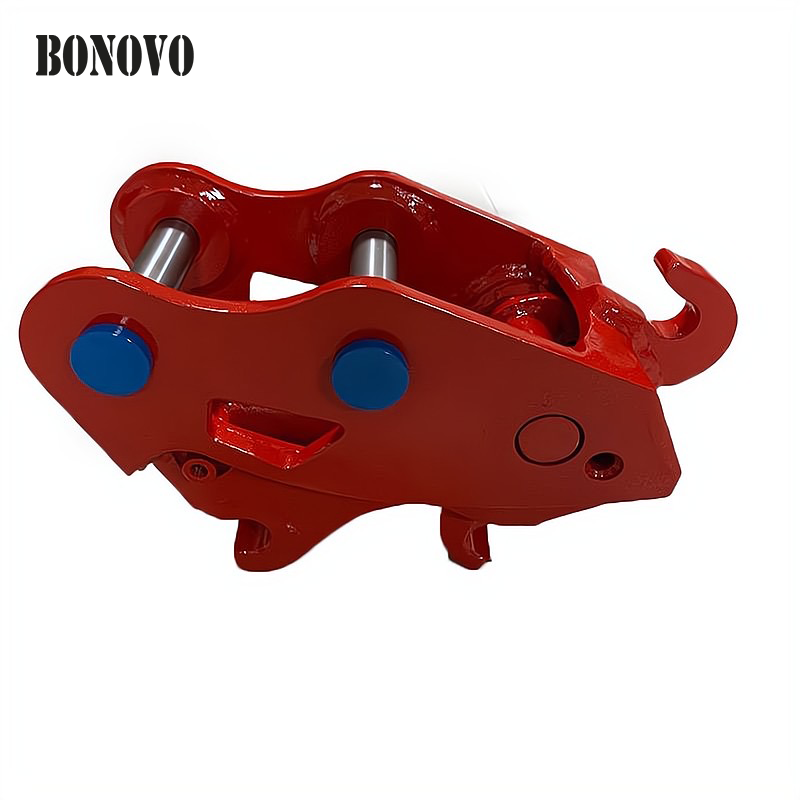
How Do Hydraulic Quick Couplers Streamline Operations?
The primary benefit of using hydraulic quick couplings is the dramatic improvement in operational efficiency. Imagine you're on a construction site, and you need to switch your excavator from a digging bucket to a hydraulic hammer. With traditional fittings, this would involve wrenches, potential fluid spills, and significant downtime. However, with a quick coupler, this changeover can be done in minutes, sometimes even seconds. This ability to rapidly attach or detach tools and hydraulic hoses means less idle time for your machinery and operators.
This enhanced efficiency translates directly into increased productivity and profitability, a key concern for business owners like Mark Thompson. The convenient way these couplings allow for the connection and disconnection of fluid lines means that a single machine can perform multiple tasks with minimal interruption. Furthermore, the sealed nature of a good quick coupling minimizes fluid loss during changeovers, which is not only cost-effective but also environmentally responsible. They provide a secure connection essential for the demanding conditions often found in heavy-duty applications.
Can You Identify the Main Types of Hydraulic Quick Couplers?
When it comes to types of hydraulic quick couplers, there isn't a one-size-fits-all solution. Different applications and operational requirements have led to the development of several distinct designs. As a factory, we at BONOVO frequently work with various coupling types to ensure our attachments integrate seamlessly with diverse machinery. Knowing how to identify hydraulic quick couplers by their design is crucial for compatibility and performance.
The most common categories you'll encounter include:
- Poppet Valve Couplings: These are a traditional design, often recognized by their conical or ball-shaped internal valves.
- Flat Face Couplings: Characterized by their flat mating surfaces, designed to minimize spillage and contamination.
- Thread-to-Connect Couplings: These require screwing the male and female halves together, offering very high burst pressure resistance.
- Ball-Locking Couplings: Utilize a series of locking balls to secure the male and female halves.
- Roller/Pin-Locking Couplings: Employ rollers or pins for the locking mechanism.
Each type of quick coupler has its own set of advantages and ideal use cases. Understanding these different types of hydraulic quick connections is the first step toward selecting the right connector for your hydraulic system.
What are Flat Face Couplings and Their Distinct Advantages?
Flat face couplings, also known as dry-break or no-spill couplings, are a highly regarded type of hydraulic quick coupler, especially in applications where cleanliness and environmental protection are paramount. As their name suggests, the mating surfaces of these couplings are flat. When the coupling is disconnected, these surfaces seal flush, resulting in minimal to zero fluid spillage and preventing the ingress of dirt or other contamination into the hydraulic system. This is a significant advantage over older poppet-style designs.
Key advantages of flat face quick couplings include:
- Minimal Spillage: They are designed to prevent spillage during connection and disconnection of fluid lines, making them ideal for environmentally sensitive areas or indoor use.
- Reduced Contamination: The flat design makes them easy to clean before connection, significantly reducing the risk of introducing contaminants into the hydraulic hoses and system.
- Low Air Inclusion: They minimize the amount of air trapped in the hydraulic lines during connection.
- Easy to Clean: The smooth, flat surfaces are much easier to wipe clean than the recessed areas of poppet couplers.
- Interchangeability (ISO 16028): Many flat face couplings adhere to the ISO 16028 standard, which ensures interchangeability between different manufacturers' products that meet this standard. This is a crucial factor for fleet managers managing diverse equipment.
These features make flat-face quick couplings an excellent choice for applications requiring high levels of cleanliness and for those looking to maximize the lifespan of their hydraulic components by minimizing contamination. BONOVO often recommends these for sophisticated machinery where hydraulic purity is critical.
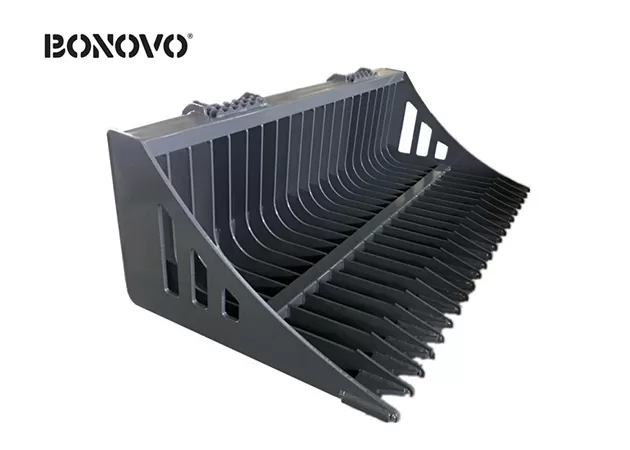
Understanding Poppet Valve Couplings: Features and Common Uses
Poppet valve couplings are one of the oldest and most widely used types of hydraulic quick couplers. They feature a poppet valve (a mushroom-shaped or ball-shaped valve) in both the male and female halves. When the coupling is connected, these valves push against each other, opening a path for hydraulic fluid to flow. Upon disconnection, springs return the poppets to their seats, sealing the fluid lines.
While they might not offer the same level of no-spill performance as flat face designs, poppet couplers are robust, generally more cost-effective, and perform well in a variety of hydraulic applications, particularly in agriculture and general industrial settings. They are a common sight in many hydraulic and pneumatic systems.
Features and considerations for poppet valve couplings:
- Cost-Effective: Generally less expensive than flat face couplings.
- Durability: Known for their robust construction, suitable for rugged environments.
- Potential for Spillage: Some fluid loss can occur during connect and disconnect operations.
- Contamination Risk: The recessed areas around the poppet can trap dirt if not cleaned properly before connection.
- ISO Standards: Many poppet couplers conform to standards like ISO 7241-A (e.g., ISO-A or poppet interchange) and ISO 7241-B (industrial interchange), which allow for some degree of interchangeability.
These couplers are often used in applications where slight fluid loss is acceptable and cost is a major driver. We advise users to always clean poppet couplers thoroughly before making a connection to minimize contamination.
How Do Thread-to-Connect Couplings Ensure Maximum Security?
For applications involving very high-pressure conditions, extreme pressure spikes, or significant vibrations, thread-to-connect couplings (also known as screw-type couplings) offer an unparalleled level of connection security. Unlike push-to-connect designs, these couplings require the operator to manually thread the male and female halves together. This threaded engagement provides a highly robust and vibration-resistant secure connection.
The primary advantages of thread-to-connect couplings are:
- High-Pressure Capability: They are designed to withstand extremely high operating and burst pressures, often found in heavy-duty applications like demolition equipment or high-impulse hydraulic tools.
- Vibration Resistance: The threaded connection prevents accidental disconnection even under severe vibration.
- Connect Under Pressure (Some Designs): Certain specialized thread-to-connect couplers are designed to be connected even with some residual pressure in the hydraulic lines, although this should always be done with caution and per manufacturer guidelines.
- Durability: Built for demanding environments, these couplings are exceptionally robust.
While the connection process is slower than with quick-connect types, the added security is indispensable in certain scenarios. The peace of mind knowing your hydraulic quick release couplings won't fail under extreme stress is invaluable. When specifying attachments for extreme-duty work, such as our BONOVO Crusher Bucket for Excavator 10-50 ton, we always consider the type of coupling that will ensure safety and reliability under such demanding pressures and temperatures.
What Key Factors Should Guide Your Hydraulic Coupler Selection?
Choosing the right hydraulic quick coupler is not just about picking a type; it's about matching the coupling to the specific demands of your hydraulic system and application. As a factory, we, Allen and the BONOVO team, always advise our clients, including those like Mark Thompson who are focused on quality and performance, to consider several critical factors:
- Operating Pressure: The coupler must be rated for the maximum operating pressure of your system, including any potential pressure spikes. Using an underrated coupling can lead to failure.
- Flow Rate: The internal diameter and design of the coupling will affect the flow rate. Choose a coupler that can handle the required flow without causing excessive pressure drop or heat generation.
- Fluid Compatibility: Ensure the coupling materials (body, seals) are compatible with the hydraulic fluid being used (e.g., mineral oils, synthetic fluids, water-glycol).
- Operating Temperature: Both ambient and fluid temperatures can affect coupler performance and seal life. Select a coupler rated for your expected temperature range.
- Connection/Disconnection Frequency: For frequent changes, a push-to-connect style like a flat face quick coupler is more efficient. For less frequent but high-security needs, a thread-to-connect coupler might be better.
- Environmental Conditions: Consider exposure to dirt, dust, corrosive materials, or extreme weather. This will influence the choice of material and coupling style (e.g., flat face couplings for dirty environments).
- Interchangeability Requirements: If you need to connect with existing equipment or prefer flexibility, select couplings that adhere to recognized ISO standards (e.g., ISO 16028 for flat face, ISO 7241 for poppet).
- Ease of Use and Safety: Consider features like ease of connection (e.g., sleeve retraction mechanisms), safety locking features, and designs that minimize spillage and contamination. For demanding jobs, a robust Excavator Buclet with Thumb needs reliable couplings.
By carefully evaluating these factors, you can select a hydraulic quick coupler that provides a fast and convenient way to manage your hydraulic hoses without compromising safety or efficiency.
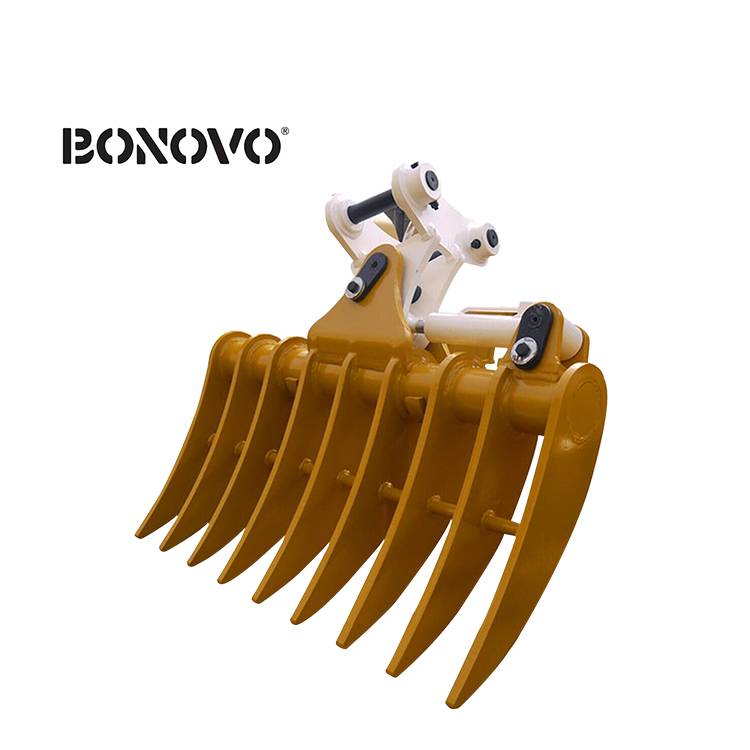
What are Common Mistakes to Avoid When Using Hydraulic Quick Release Couplings?
Even the best hydraulic quick release couplings can fail or underperform if not used correctly. Understanding common mistakes can help prevent premature wear, damage, and safety hazards. From our experience at BONOVO, here are some pitfalls to watch out for:
- Connecting/Disconnecting Under Pressure: Unless the coupler is specifically designed for it, attempting to connect or disconnect hydraulic lines with high residual pressure can damage the coupling, make connection difficult, and be a safety risk. Always relieve pressure first.
- Mixing Incompatible Halves: Trying to connect a male coupling half from one manufacturer or ISO standard with a female half from another, incompatible one can lead to leaks, poor performance, or inability to connect. Always ensure compatibility.
- Forcing Connections: If a coupler doesn't connect smoothly, don't force it. There might be dirt, damage, or misalignment. Forcing can cause brinelling (indentation of locking mechanisms) or damage seals.
- Not Cleaning Couplers: Dirt and debris are major enemies of hydraulic systems. Failing to clean couplers before connection introduces contamination, leading to premature wear of components and valve malfunction.
- Using Damaged Couplers: If a coupler shows signs of wear, leaks, or damage to the thread or locking mechanism, it should be replaced immediately. Using a damaged fitting is a safety hazard.
- Exceeding Pressure/Flow Ratings: Operating couplings beyond their specified limits can lead to catastrophic failure.
- Improper Hose Routing: Allowing hydraulic hoses to kink, twist, or be pulled excessively at the coupling can strain the fitting and lead to leaks or failure.
- Neglecting Maintenance: Quick-release couplings require periodic inspection and maintenance, such as checking seals and cleaning.
Avoiding these common mistakes will significantly extend the life of your hydraulic quick couplings and ensure the safety and efficiency and safety of your operations.
How Do You Properly Connect and Disconnect Hydraulic Quick Couplings?
Properly connecting and disconnecting your hydraulic quick couplings is essential for their longevity and the safety of your hydraulic system. While specific steps might vary slightly based on the coupler design (e.g., push-to-connect, sleeve retraction, thread-type), here's a general guide:
To Connect:
- Relieve Pressure: Ensure there is no trapped pressure in the hydraulic lines you intend to connect hydraulic hoses to, unless using specialized couplers designed for connection under pressure.
- Clean Both Halves: Thoroughly wipe clean both the male plug and the female socket of the quick coupler. Pay special attention to mating surfaces and sealing areas to prevent contamination.
- Align: Carefully align the male and female halves.
- Connect:
- For push-to-connect couplings: Firmly push the male half into the female half until you hear or feel it click or lock into place. Some designs may require retracting a sleeve on the female coupler before insertion, then releasing it to lock.
- For thread-to-connect couplings: Engage the threads and screw the halves together until fully seated and tightened according to manufacturer specifications.
- Verify Connection: Gently tug on the coupling to ensure it is securely locked. Check for any visible leaks once the system is pressurized.
To Disconnect:
- Relieve Pressure: Again, ensure system pressure is relieved before attempting to disconnect hydraulic lines.
- Clean the Area: Wipe down the exterior of the coupling to prevent dirt from entering the disconnected halves.
- Disconnect:
- For push-to-connect couplings: Typically, this involves retracting a locking sleeve on the female coupler (sometimes called sleeve retraction) and then pulling the two parts apart.
- For thread-to-connect couplings: Unscrew the halves.
- Protect Disconnected Halves: Immediately use dust caps and plugs on the disconnected male and female couplers to protect them from damage and contamination.
Following these steps for connection and disconnection of fluid lines will help maintain the integrity of your couplings and your entire hydraulic system, ensuring fluid to flow efficiently and safely without loss of fluid. This is critical for equipment like a Skid Steer Auger, which relies on quick and clean hydraulic connections.
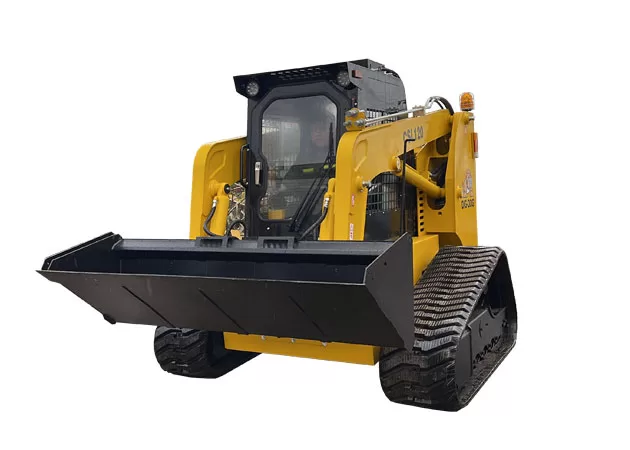
What Role Do ISO Standards Play in Hydraulic Quick Couplings?
ISO (International Organization for Standardization) standards play a vital role in the world of hydraulic quick couplings. These standards define critical dimensions, performance requirements, and testing procedures for various types of quick couplers. Adherence to ISO standards by manufacturers like BONOVO offers several key benefits for users:
- Interchangeability: This is perhaps the most significant advantage. If a male coupling half from one manufacturer and a female coupling half from another both conform to the same ISO standard (e.g., ISO 16028 for flat face couplings or ISO 7241-A for certain poppet couplers), they should, in theory, connect and function correctly. This gives users like Mark Thompson more flexibility in sourcing and lessens dependence on a single supplier.
- Guaranteed Performance Levels: ISO standards specify minimum performance criteria, such as pressure ratings, burst pressure, and leakage rates. This provides a baseline level of quality and reliability.
- Simplified Selection: Knowing the relevant ISO standard helps in selecting the correct coupler for an application and ensures it will meet certain operational benchmarks. It aids in the process to identify hydraulic quick couplers that are suitable.
- Global Compatibility: ISO standards are recognized worldwide, facilitating international trade and the use of equipment across different regions.
Some common ISO standards relevant to hydraulic quick couplings include:
- ISO 7241 Series (Part A and Part B): Covers poppet-style quick-release couplings used in general purpose industrial applications and agricultural machinery.
- ISO 16028: Specifies flat face quick couplings, emphasizing no-spill characteristics and suitability for applications requiring minimal contamination.
- ISO 5675: Pertains to agricultural hydraulic quick-connect couplings.
- ISO 14540 & ISO 14541: Cover screw-to-connect (threaded) couplings for high-pressure hydraulic applications.
While ISO standards promote interchangeability, it's always a good practice to use matched halves from the same manufacturer when possible, especially for critical applications, to ensure optimal performance and safety. As a factory, we ensure our products that claim ISO compliance meet these rigorous standards.
Maintaining Your Hydraulic Couplings: Tips for Longevity and Peak Performance
Proper maintenance is key to extending the life of your hydraulic quick connect couplings and ensuring they perform reliably. Neglecting maintenance can lead to leaks, contamination, difficult operation, and even premature failure. Here are some essential maintenance tips from our experience at BONOVO:
- Regular Cleaning: Before every connection, thoroughly clean both male and female couplers. After disconnection, clean them again before applying dust caps and plugs. This is the first line of defense against contamination.
- Use Dust Caps and Plugs: Always use protective dust caps on female couplers and plugs on male couplers when they are disconnected. This prevents dirt, moisture, and physical damage to the mating surfaces and sealing mechanisms.
- Inspect Seals Regularly: Check seals (O-rings, backup rings) for signs of wear, cracking, nicks, or deformation. Damaged seals are a common cause of leaks. Replace them promptly with genuine spare parts.
- Check for Physical Damage: Inspect the coupler bodies, thread (if applicable), locking mechanisms (balls, sleeves), and mating surfaces for any signs of damage, such as dents, burrs, or brinelling. Damaged couplings should be repaired or replaced.
- Lubrication (If Recommended): Some couplers may benefit from light lubrication on O-rings or moving parts as per the manufacturer's instructions. Use only compatible lubricants.
- Proper Storage: Store disconnected hydraulic hoses and couplers in a clean, dry environment to prevent corrosion and contamination.
- Avoid Excessive Strain: Ensure hydraulic hoses are routed correctly to avoid sharp bends, twisting, or excessive pulling force on the couplings.
- Address Leaks Immediately: Even minor leaks can indicate a problem. Investigate and repair leaks promptly to prevent fluid loss and potential system damage.
By incorporating these simple maintenance practices into your routine, you can significantly enhance the reliability and lifespan of your hydraulic quick couplings, ensuring a secure connection every time. This proactive approach aligns with the quality-sensitive preferences of customers like Mark Thompson, who understand that well-maintained equipment minimizes downtime and maximizes profitability. For complex systems like those found on our Mini Skid Steer Loader DSL30C, maintaining every component, including couplings, is crucial for overall performance.
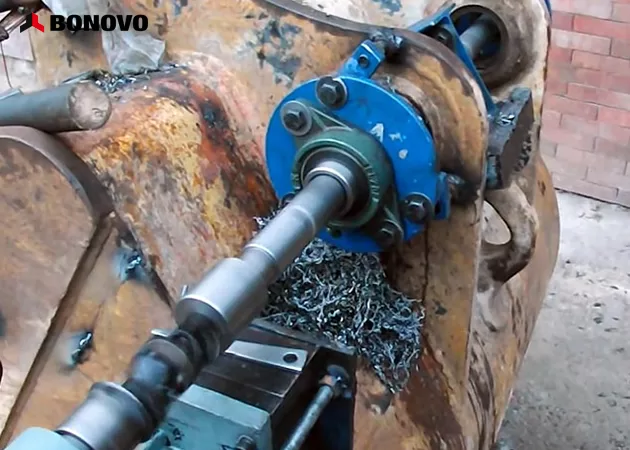
The Future of Hydraulic Quick Coupler Technology: What Innovations Await?
The world of hydraulic quick couplings is continually evolving, driven by demands for greater efficiency, safety, and intelligence in hydraulic systems. As a forward-thinking manufacturer, BONOVO keeps a close eye on emerging trends. We anticipate several exciting developments:
- Smarter Couplings: We're likely to see more multiple hydraulic quick couplers integrated with sensors that can detect proper connection, monitor pressure and temperature, and even signal potential issues before they lead to failure. This data can be fed into telematics systems for predictive maintenance.
- Enhanced Safety Features: Innovations will continue to focus on preventing accidental disconnection, ensuring secure locking mechanisms even under extreme conditions, and further minimizing spillage and operator exposure to hydraulic fluids.
- Lighter and Stronger Materials: The use of advanced alloys and composite materials could lead to couplers that are lighter yet stronger, with improved corrosion resistance and a wider operating temperature range.
- Improved Connect-Under-Pressure Capabilities: While some couplers already offer this, future designs will likely make it safer and easier to connect and disconnect hydraulic lines with some residual pressure, reducing the need for complex pressure-relief procedures.
- Greater Standardization and Modularity: Efforts may lead to even broader interchangeability and modular designs that allow for easier customization and repair of hydraulic quick release couplings.
- Automated Connection Systems: For certain applications, especially in robotics or automated machinery, fully automated hydraulic quick connect couplings could become more prevalent, eliminating manual intervention.
These advancements promise to make hydraulic systems even more versatile, reliable, and user-friendly. At BONOVO, we are committed to incorporating proven innovations into our product lines, including our extensive range of Excavator Attachments, to ensure our customers benefit from the latest in coupling technology. The drive for efficiency and safety means the humble hydraulic coupler will continue to be an area of active development.
Key Takeaways: Your Hydraulic Quick Coupler Checklist
To wrap up our deep dive into hydraulic quick couplings, here are the most important points to remember:
- Purpose: Hydraulic quick couplers enable fast, tool-free connection and disconnection of hydraulic hoses, significantly boosting efficiency and versatility.
- Core Types: Main types include poppet valve, flat face (ideal for no-spill and cleanliness, often ISO 16028 compliant), and thread-to-connect (for high-pressure and vibration resistance).
- Selection is Key: Choose couplers based on pressure, flow rate, fluid compatibility, temperature, connection frequency, environment, and ISO interchangeability needs.
- Avoid Common Mistakes: Don't connect/disconnect under pressure (unless designed for it), mix incompatible halves, force connections, or neglect cleaning. This prevents brinelling and premature wear.
- Proper Procedure: Always relieve pressure, clean couplers, align carefully, and ensure a secure connection. Use dust caps/plugs on disconnected halves.
- ISO Standards Matter: They promote interchangeability and define performance benchmarks, helping to identify hydraulic quick couplers suitable for your needs.
- Maintenance is Non-Negotiable: Regular cleaning, inspection of seals and bodies, and proper storage are crucial for longevity and preventing fluid loss or contamination.
- The Future is Smart: Expect more intelligent, safer, and more efficient hydraulic quick connect couplings with advanced materials and automation.
Understanding and properly managing your hydraulic quick couplings is fundamental to the health and productivity of your hydraulic machinery. As Allen from BONOVO, a factory dedicated to quality and innovation in construction machinery attachments, I hope this guide empowers you to make informed decisions and optimize your operations. Whether you're a seasoned professional like Mark Thompson or new to the field, mastering your couplings is a step towards greater success.




